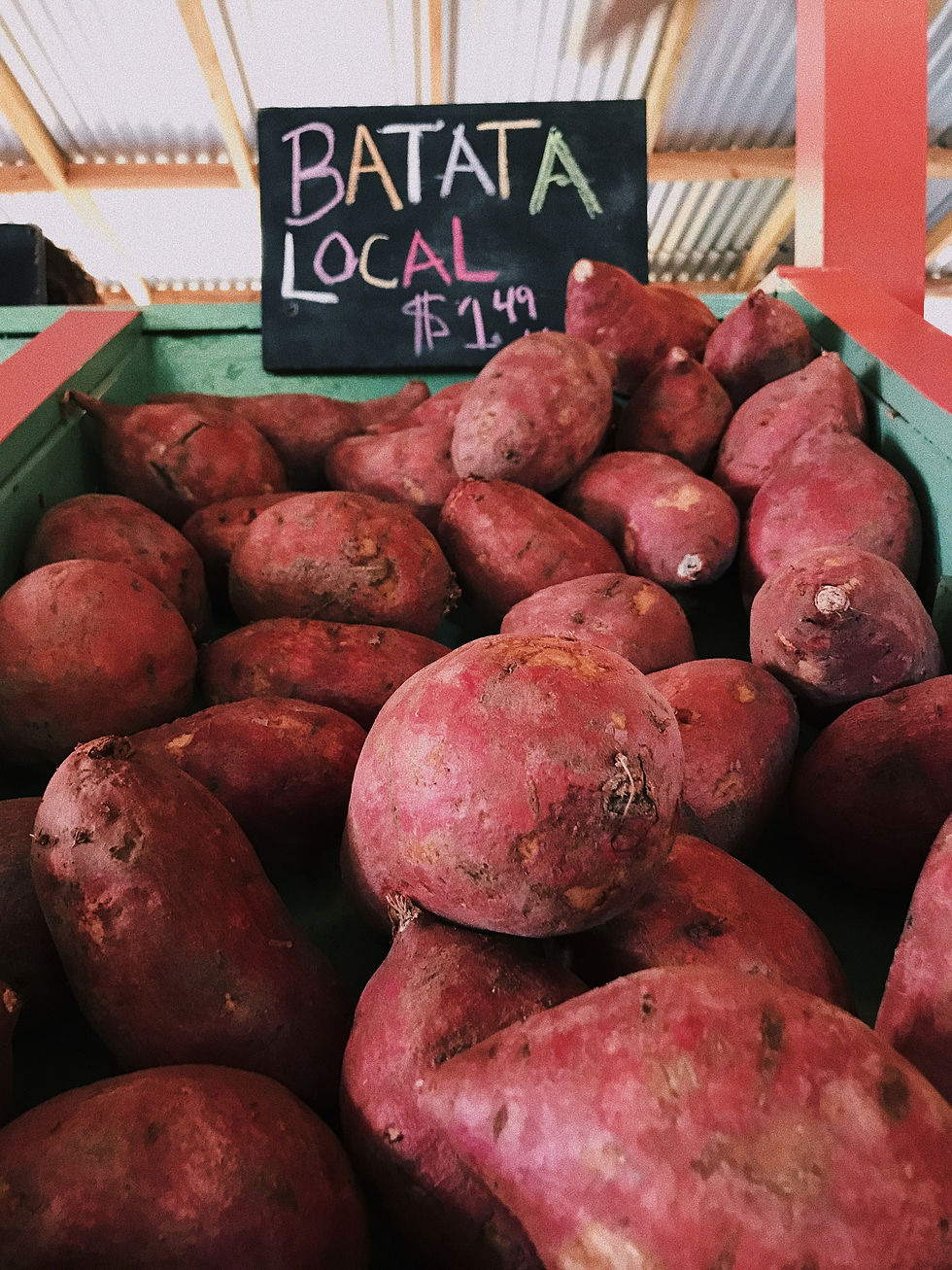How Is the Sweet Potato Saving Africa From the Global Wheat Crisis?
- blackcoralinc2021
- Jul 12, 2022
- 3 min read
Sweet Potato Bread offers a tasty lesson from Africa's...

Indigenous farmers on the importance of traditional crops!
Climate change poses a threat to the world's subsistence crops. Heat waves, which are likely to intensify according to climate evolution predictions, are generating levels of heat stress that are damaging to agricultural production. Identifying resistant crop varieties is therefore crucial to ensuring people's food security and farmers' resilience.
So mixing sweet potatoes into bread and other baked goods will reduce wheat imports by millions of tons a year, for nations like the U.S. and Egypt who are patterning themselves after the model established by Kenya’s food scientists at the International Potato Center (CIP).The CIP of Kenya has developed the technology for producing “shelf-stable purée, using microwave processing and aseptic packaging, that allows it to be stored for more than a year at ambient temperatures, eliminating the need for cold storage.
Aseptic puree can be used as an ingredient in food products made by small and medium enterprises and the informal market sector, and with Kenya's wheat import bills estimated at $250 million, sweet potato puree offers a cost-effective, homegrown alternative. ”As reported by All Africa dotcom “In collaboration with Euro-Ingredients Limited, sweet potato puree has been successfully commercialized in Kenya, Malawi, Rwanda, and Burkina Faso and piloted in Ethiopia, Uganda, Ghana, Nigeria, Tanzania, The Gambia, South Africa, and Mozambique, creating new markets for farmers and new jobs for young people across the world.”
According to Dr. Maria Andrade, principal scientist at the CGIAR International Potato Center (CIP) and 2016 World Food Prize Laureate “...the current global food crisis shows how these crops can play a foundational role in creating more resilient food systems before shocks and stresses hit With more collaboration by the private sector and support from policymakers, more countries across the continent could be reaping the benefits of potato and sweet potato innovations.”
Sweet potatoes are also climate change resilient; they have been a mainstay in the African American, Korean and West African diet for centuries! So those farmers know that since sweet potatoes have a short growing cycle and develop underground they are less susceptible than other crops to extreme weather like droughts, heavy rain and strong winds. Because climate change causes higher levels of carbon dioxide in the atmosphere this has the effect of potentially doubling the size of the sweet potato, the fifth most important food crop in the developing world.
“The hardy sweet potato is increasingly becoming a staple in Africa and Asia, producing “more edible energy per hectare per day than wheat, rice or cassava” says research scientist Hope Jahren at the University of Hawaii at Manao. She and her colleagues grew the plants at four CO2 concentrations: the current level of 390 parts per million, as well as 760, 1140 and 1520 ppm. For the least extreme scenario at 760 ppm, the team found the tubers grew up to 96 per cent larger. If the potatoes maintain the same level of nutrient content by weight we have a win-win situation for fighting food scarcity.

Global annual mean CO 2 concentration has increased by 50% since the start of the Industrial Revolution, from 280 ppm during the 10,000 years up to the mid-18th century to 421 ppm as of May 2022. The present concentration is the highest for 14 million years.


Comments